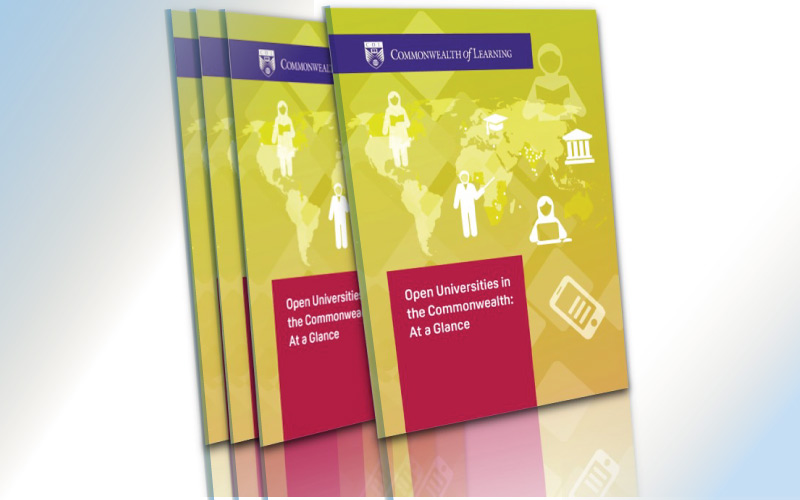
By Dr Jako Olivier
COL Adviser: Higher Education
The state of open universities within the Commonwealth was explored in a recent publication from the Commonwealth of Learning (COL). This empirical report, Open Universities in the Commonwealth: At a Glance – the second edition of the publication originally released in 2017 – shows how the higher open education landscape has changed in the past six years.
This report provides a detailed glimpse into the nature of open universities, specifically in the Commonwealth, and can inform future planning and benchmarking within the sector.
In comparing this latest report, covering 28 universities along with the 2017 report, it is evident that there has been a clear decline in student numbers: 3,463,369 in 2021 compared to 4,464,751 in 2016. This trend is also visible not only in terms of the total number of students, but also across many of the open universities.
Unfortunately, gender equity scores have worsened on average across institutions. Most open university staff members are male (57.3 per cent), with only 42.7 per cent of the staff members being female. For full-time teaching staff, the gap is smaller, with 51.9 per cent males and 48.1 per cent females. However, for part-time teaching staff the gap is wider, with 57.83 per cent males and 42.17 per cent females. The gender equity average for all staff is 0.89. For full-time teaching staff it is 0.73, lower than the average of 1.07 in 2017.
Most of the open universities rely significantly on part-time teaching staff. In this regard, the majority of open university staff are part-time teachers (89.4 per cent), followed by administrative and support staff (5.9 per cent) and then full-time teachers (2.5 per cent) and technical staff (2.2 per cent).
While this is necessary to keep the cost lower and have economies of scale, there seems to be a need that the student-teacher ratio is balanced. This ratio currently stands at 917.72 students per teacher, compared to 21 students per teacher in 2017 – a decrease of about 4200%.
On average, student fees make up 58.54 per cent) of the revenue, while government grants make up 20.69 per cent), with endowments and other sources income accounting for the rest. As for expenditures, on average, 60.82 per cent is spent on staff provision and 39.18 per cent on programme delivery. As in 2017, student fees remained the major source of funding and staff provisions the largest expense. Also, in line with the 2017 report, the income of most open universities still exceeds expenditure.
Different forms of learner support are evident from the different open universities, with a specific emphasis on online and offline multimodal approaches. In addition, satellite learning support, study and regional hubs or centres seem to be the main support mechanisms providing local in-person contact with the open universities. The open universities indicated the importance of research activities and highlighted definite efforts to focus, fund and incentivise research.
Apart from the descriptive data noted above, future priorities of open universities were also explored. In this context, institutional priorities relate to the following:
- improving university structures, processes and offerings;
- developing quality assurance mechanisms;
- creating inclusive spaces; broadening university reach and engagement through internationalisation;
- expanding technologies and open and distance learning to optimise teaching and learning;
- improving student numbers and success;
- developing and transforming the staff population; and
- expanding and strengthening research activities to enable greater social responsibility and a stronger impact.
In her foreword, COL President and CEO, Professor Asha Kanwar, noted the importance of open universities in contributing to increasing the Age Participation Rates in tertiary education in many developing countries.


